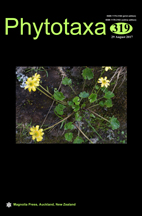Abstract
A taxonomic revision of the species of the Festuca marginata group on the Iberian Peninsula is presented. Traditionally, this group has included several taxa of Festuca sect. Festuca characterized mainly by having three strands of sclerenchyma in the leaf blade and whose delimitation is difficult. To clarify taxonomy of this group, a morphological, anatomical, chorological and ecological study was performed on 246 specimens from herbaria and wild populations, and 21 morphological and anatomical characters were studied biometrically in 72 specimens from 65 different locations. A new taxonomic treatment of the group is derived from the results of the analyses. Festuca marginata, a species distributed over the east and northeast of the territory, is recognized with two subspecies: subsp. marginata, which is widely distributed in France but has a restricted distribution in the Pyrenean area, and subsp. andres-molinae, endemic in the east and northeast of the Iberian Peninsula. Festuca lambinonii, widely distributed in the mountains of the centre, east and northeast of the territory, is also recognized. An identification key, descriptions, synonyms, distribution, phenology, and ecology data are provided for the three taxa recognized.

